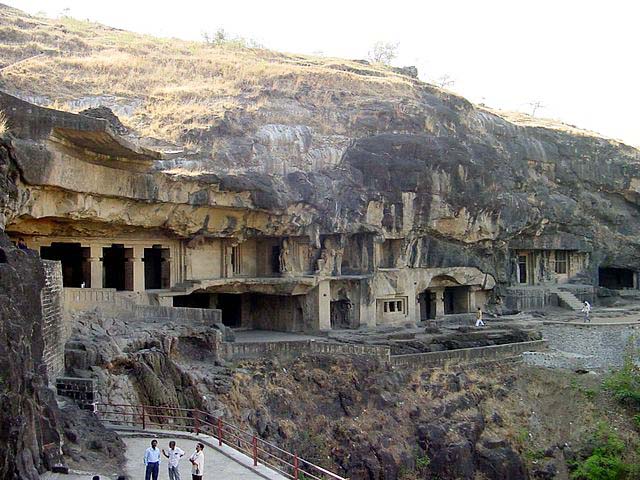The cave temples of Ellora, located roughly
200 km northeast of Bombay in the Deccan plateau that separates
north from south India, were
excavated between 600 AD and 900 AD. The cliff face runs approximately north - south, the caves opening to the west. Buddhist, Hindu, and
Jain temples were constructed here. Like the cave temples at Elephanta and
Ajanta, all were excavated from the solid rock.
The 34 caves of Ellora are numbered from south to north, which corresponds more or less (there are significant exceptions, such as Cave 21) to the order in which they were constructed. The
southernmost temples, caves 1-12, are Buddhist and were built
in the 7th (or a little before) and 8th centuries AD. The
middle caves (13-29) are Hindu, which includes some conversions of earlier Buddhist caves. Their dates range from the 7th century (or again, a little before) to the 9th century AD.
The upper caves are Jain (9th century.)
My source for these
dates is George Michell (the Penguin Guide, p. 358);
other writers extend these dates a bit downwards.
For example, Harle (p. 126)
assigns Cave 21 to the mid 6th century,
whereas Michell (op. cit.,
p. 366) dates it to the late 6th century.
In this photograph, the viewer is looking south, from a
vantage point near cave 8. The entrances to caves 2-6 are visible.
The plainness of their facades bespeaks their early date.


